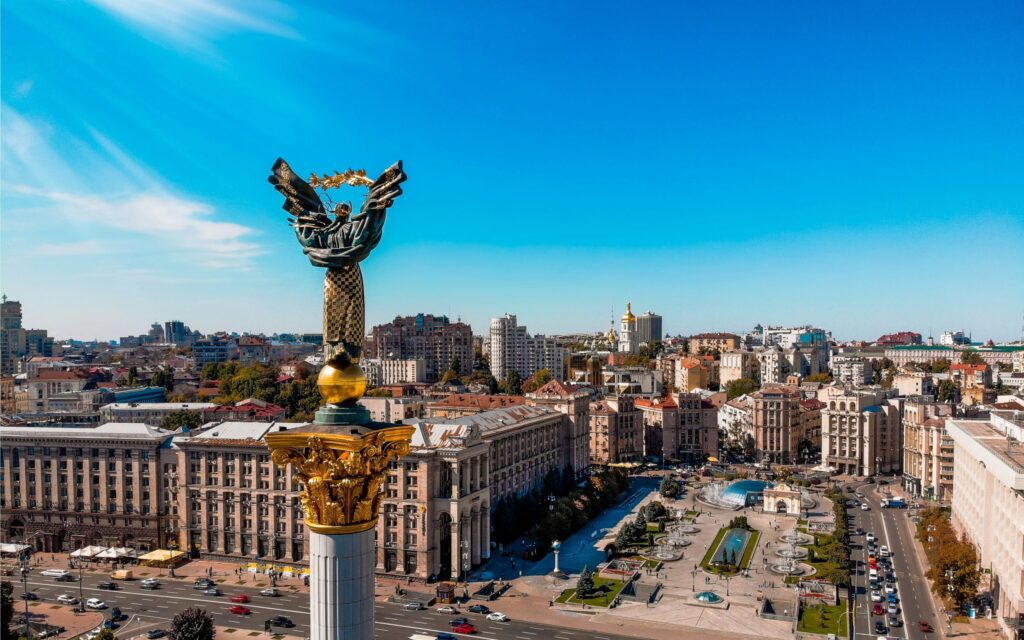In addition to replacing what has been lost to Russian destruction, the post-war reconstruction of Ukraine’s economy should be based on the principle of “build back better” and a green transition.
Both, claim a major new report, will enable Ukraine to “leapfrog” and develop more technologically advanced sectors with higher value added.
The report, Ukraine’s Future Competitiveness, was published this week by the Vienna Institute for International Economic Studies (wiiw) in collaboration with the Bertelsmann Foundation, makes it clear that Ukraine has potential—and identifies six areas of particular interest for investors: renewable energy; rare raw materials; metal processing; mechanical engineering; food; IT.
Provided that a combination of industrial policy, an FDI-attraction strategy, and institutional and education reforms are applied, their further development will facilitate Ukraine’s integration into the EU economy, the report suggests.
The report has three recommendations for EU policymakers—important given that the EU has taken the lead in aligning reconstruction efforts with the EU accession process.
First, the EU should help Ukraine to overcome its weakness in attracting investment. The large-scale war has made this even more difficult, but focusing on Ukraine’s strengths offers opportunities that match the EU’s own transformation objectives along with its own evolving industrial policy agenda and the EU Green Deal.
Centre stage should be given to helping Ukraine to develop a sustainable model for FDI attraction that goes beyond a race to the bottom on wages.
Suitable measures include improving labour productivity by (fully) integrating Ukraine into educational, research and development and industrial policy programmes.
Second, the EU should continue to increase Ukraine’s access to the EU market and integration into EU value chains in order to incentivise: Ukraine’s greater regulatory alignment; Ukraine’s direct and early involvement in EU initiatives related to EU trade standards and the EU Green Deal; digital market integration; and connectivity.
From a holistic EU perspective and with a focus on reforms that are future-proof and long-term, temporary liberalisation measures should be made permanent instead of giving in to short-term and only supposed solutions of protectionist defence, and Ukraine’s comparative advantages should be used to elevate the EU’s sovereignty.
Third, the EU should work with Ukraine to develop its industrial policy, tailoring recovery and reconstruction to build on the identified strengths and promising niches that the Ukrainian economy has to offer to the extent possible even during the ongoing war.
With the Ukrainian economy demonstrating key capabilities for over two years now—such as resilience, flexibility, adaptability and even ingenuity—it stands to reason that Ukrainian industrial sectors can be made fit for the demands of the EU single market, the report says.
The importance of FDI
Attracting foreign direct investment (FDI) will be crucial for Ukraine’s success. These private funds are expected to play a vital role in reconstruction, as they are more flexible and diversified than money from public and state donors.
In addition, they will bring technologies and help to forge business links, which in turn will foster swifter integration into the EU and the global economy.
However, before Russia launched its full-scale war, FDI inflows into Ukraine had been very volatile and limited compared to the inflows into its neighbours. The most significant FDI inflows were registered before the 2009 global financial crisis, whereas Ukraine’s FDI inflows were close to zero or even negative in the 2014-15 period as well as in 2020. Furthermore, Ukraine has attracted one of Europe’s lowest FDI stocks per capita.
In 2019 and 2021, Ukraine adopted several important laws aiming to stimulate FDI, including the law on concessions aiming to strengthen protection of creditors’ rights; the law on state support for investment projects with significant investments in Ukraine (known as the law on “investment nannies”), which includes state guarantees on stable legislation and tax exemptions, among other benefits; and the amendments to the law on industrial parts, featuring additional tax-related and infrastructural incentives.
However, according to business surveys,15 the significant backlog of FDI attraction is not sectoral regulations, but rather the protection of property rights and of the rule of law.
This has been confirmed by Heritage Foundation indexes showing that Ukraine lags behind its peers in terms of protecting property rights and judicial effectiveness.
“Ukraine is well endowed both with natural resources and high-skilled labour and has been deepening its economic integration with the EU, which could facilitate a bigger involvement of the country’s economy in the global value chains,” says wiiw’s Olga Pindyuk, one of the report’s authors.
“Security guarantees as well as institutional reforms in the areas of rule of law and property rights are the necessary pre-requisites for a large-scale foreign investment attraction.”
IT sector potential
The report’s identification of the IT sector as one of six key drivers of Ukraine’s reconstruction is no surprise. The further development of its IT sector will be important, as the sector is highly resilient to security risks, has a positive development history, and is among the most promising technological sectors worldwide.
“Over the last decade, IT has become one of the most dynamic sectors in Ukraine, featuring solid export-oriented growth and accounting for about four per cent of the total value added in 2021,” adds Pindyuk.
“Prior to the full-scale invasion, the sector employed almost 300,000 people and the educational system regularly supplies significantly more IT graduates than its neighbours in Central-Eastern Europe (68 graduates per 100,000 residents in Ukraine compared to 23 in Poland, 46 in Hungary and 54 in Estonia).
“Thanks to its high resilience to the shocks of the war, Ukraine’s IT sector maintained its economic significance in 2022-2023 and remains quite competitive.”
There has also been recognition of the potential of Ukraine’s IT sector in recent weeks from TechChill, one of the largest tech events in the Baltics. Next month, a convoy of vehicles will be driven from Riga to Kyiv by entrepreneurs from Latvia followed by an ecosystem meetup in collaboration with Lift99 Kyiv Hub.
The meetup is intended to bring together the Baltic and Ukrainian start-up ecosystems—to not only demonstrate support for Ukraine, but to learn from each other and share insights. Ukrainian start-ups will present their companies, and the Latvian delegation will present funding and growth opportunities within the Latvian start-up ecosystem.
By bridging the Latvian and Ukrainian ecosystems, TechChill hopes to further strengthen the two ecosystems’ ties, as well as to bolster and support the Ukrainian people, economy, and start-ups, through soft-power measures.
“We are very impressed with the resilience not only of Ukraine, but also the start-up community,” says Annija Mežgaile, TechChill CEO.
“We hope to continue to strengthen ties with the Baltic startup ecosystem to benefit both. By driving to Kyiv we demonstrate unequivocally that we stand with Ukraine, and by bringing our start-up ecosystems closer together, we highlight that we have much in common to fight for.”
Photo by Glib Albovsky on Unsplash.







